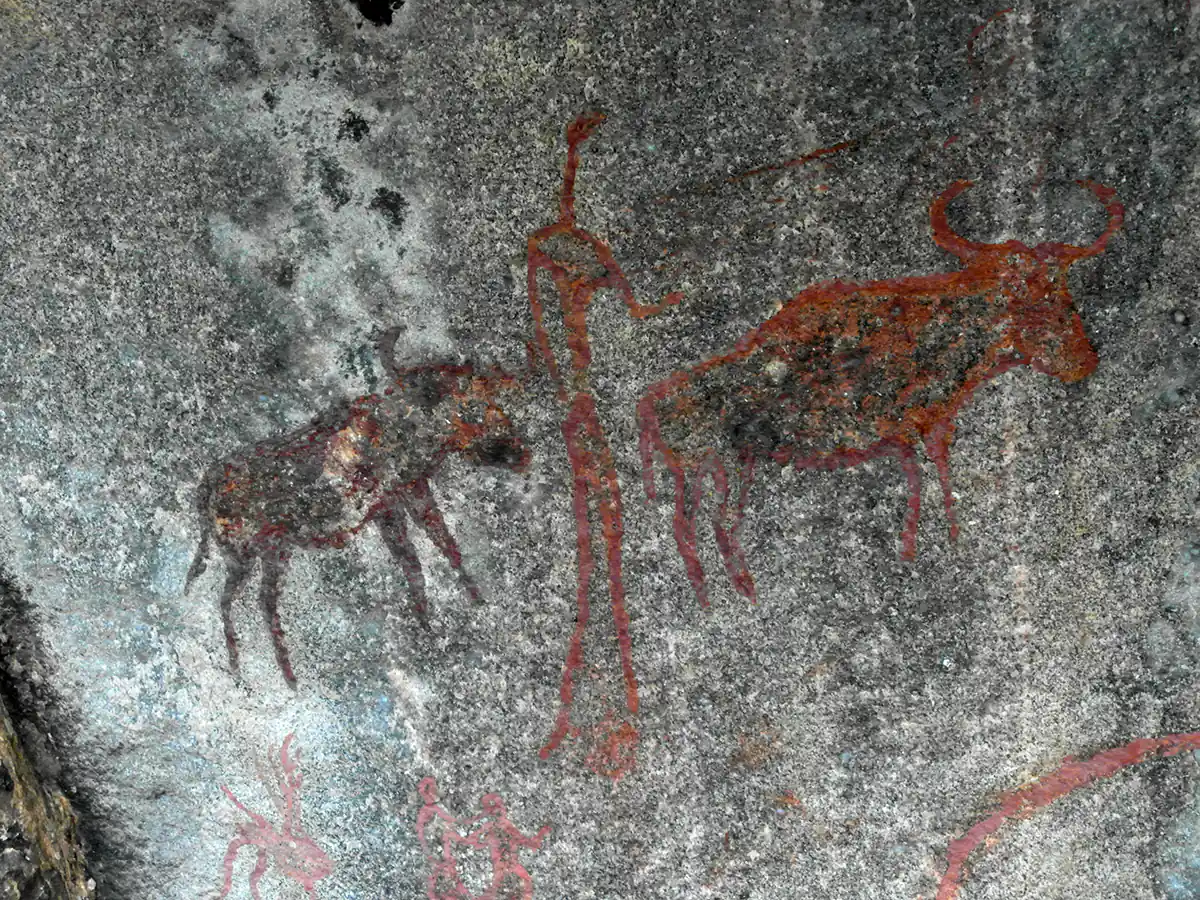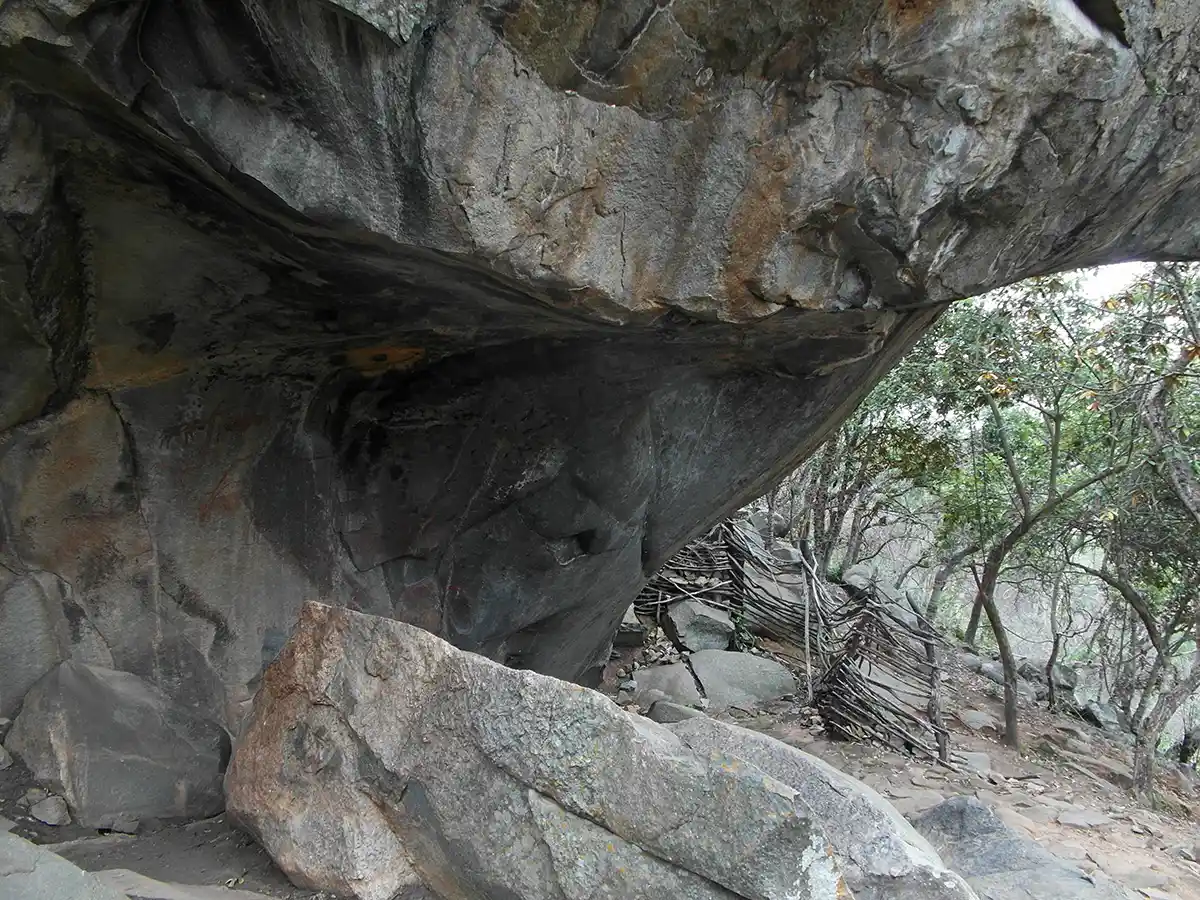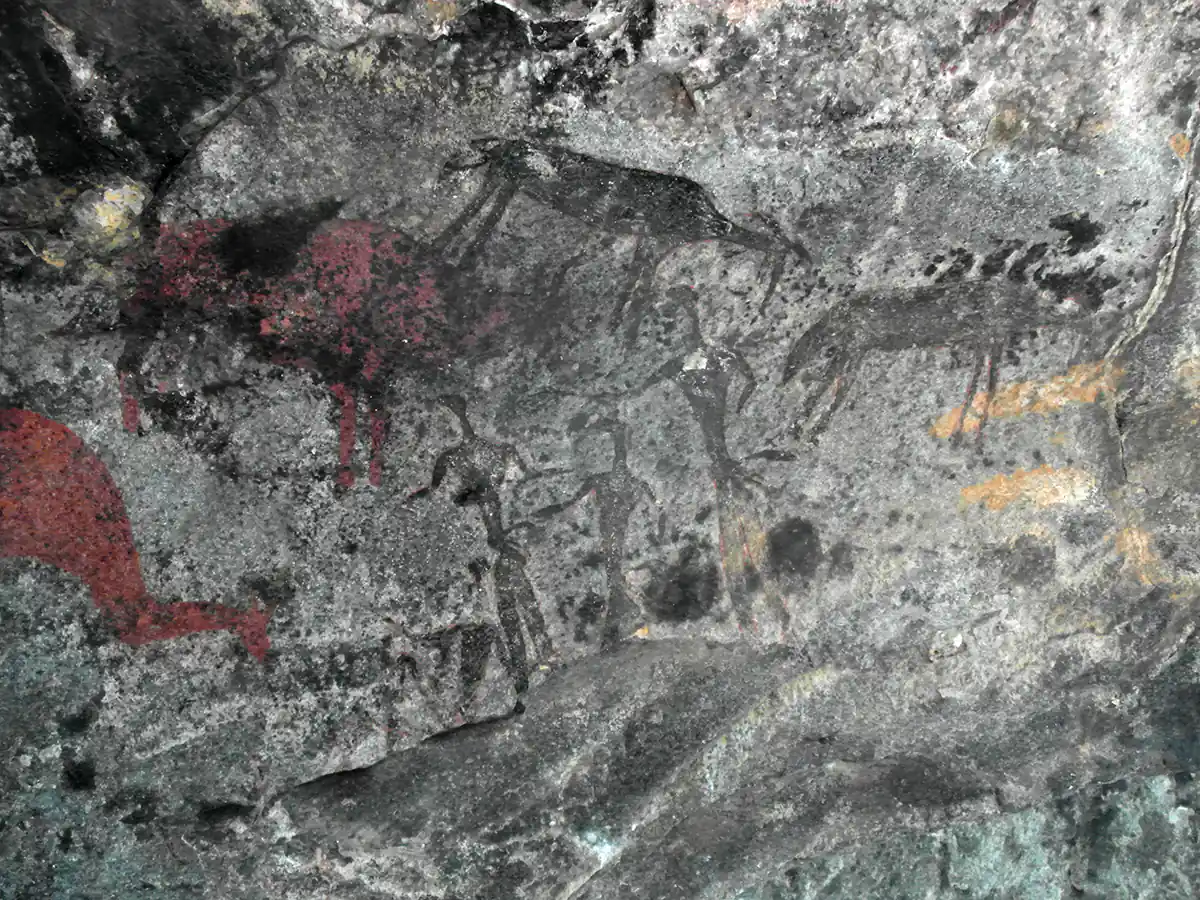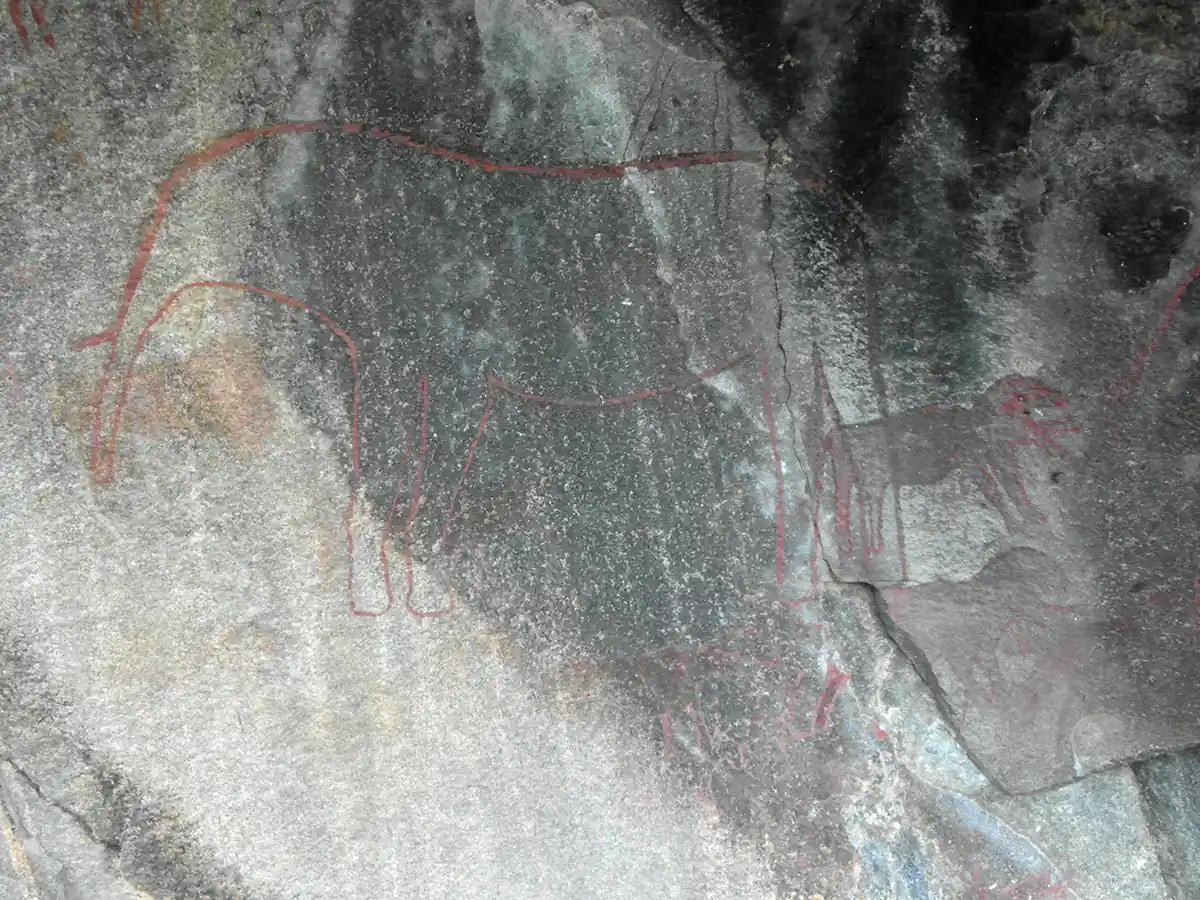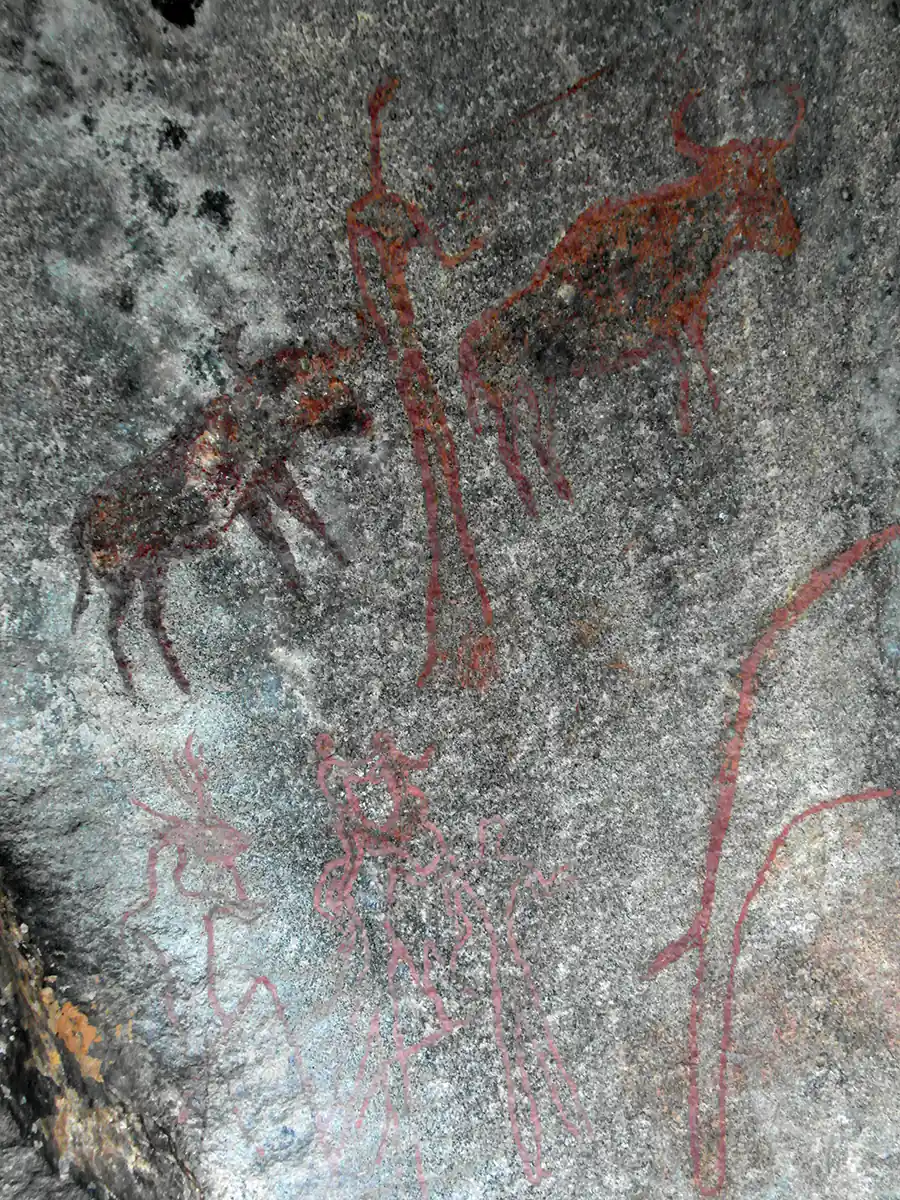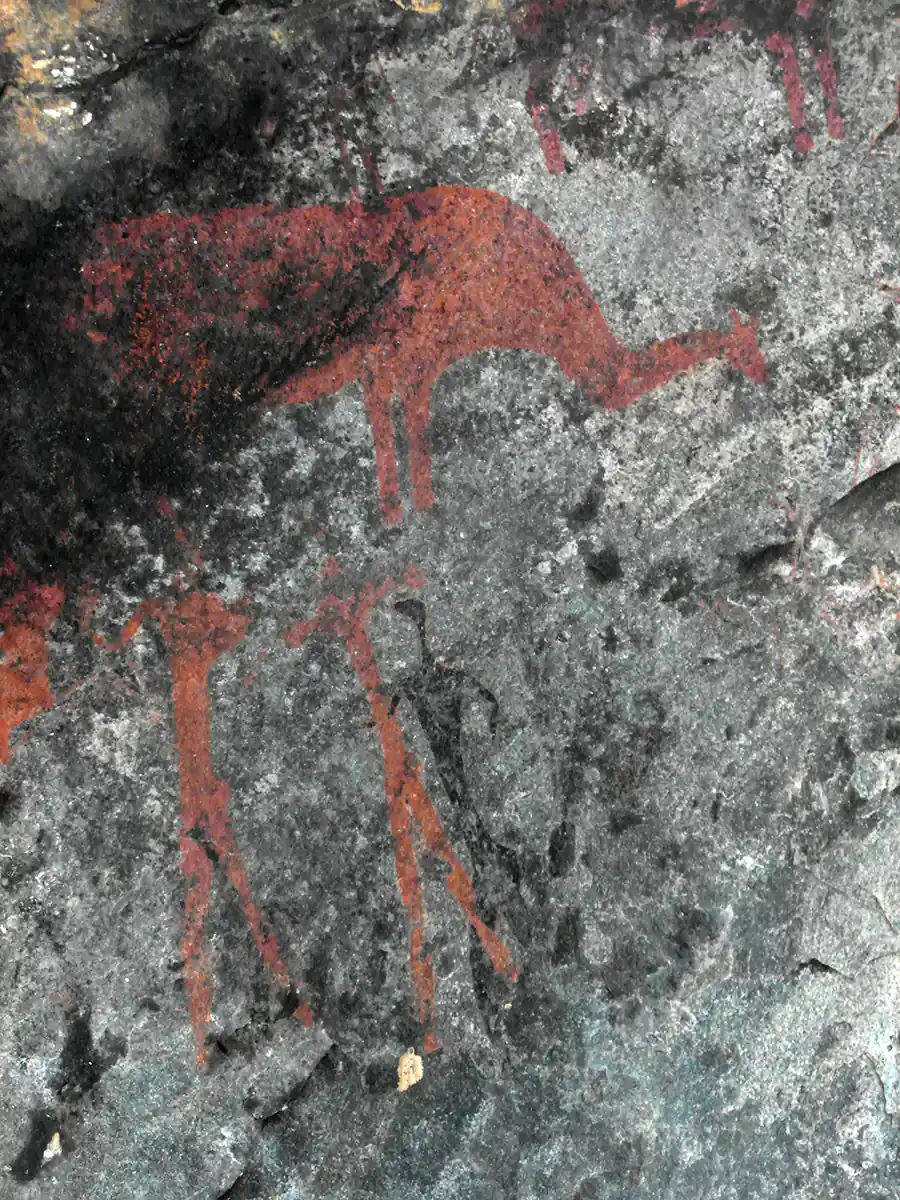Nsangwini Cave Paintings
Nsangwini preserves Swaziland's best bushman paintings and is one of the country's most impressive cultural attractions. The caves were discovered in 1955. Dating the paintings has, however, proved trickier: they could be anything from 400 to 4,000 years old and were probably created over hundreds of years. Whatever their age, this was the work of the San and pre-dates colonial times. You will see various animals clearly delineated on the rock, including an elephant, a lion, and the only rock-art wildebeest south of the Zambezi. More intriguing are the human figures. Some are clearly hunters, walking in line bearing spears. Others are more bizarre, apparently floating on raised legs and embellished with feathers and, in one case, the head of a mantis. The figures are supernaturally tall to the right of a vertical fissure in the rock.
Archaeologists now believe that these paintings were completed in a shamanic trance and that many carry symbolic meaning. The elephant, for example, represents rainmaking - the cave probably hosted sacred rain ceremonies - while the fissure represents the division between the material and the spirit or 'power' world, with the hunters undergoing a transformation as they pass over into the latter (hence their towering stature). Blacker figures higher on the wall depict the first Bantu pastoralists to arrive in Swaziland. The work has been executed with delicacy and precision using red ochre and animal blood. Given the ravages of time, it seems little short of miraculous that it has survived at all, let alone with such color and clarity.
Nsangwini is clearly signposted from the main Mbabane-Pigg's Peak road and from the Maguga Dam loop road. There are 7.5 km of dirt roads from the tar, but the road is suitable for all vehicles.
Author's note: It is inaccurate and misleading to describe and label the rock paintings and etchings in caves strewn across the vast region of southern Africa as 'rock art' for two reasons. One, while the paintings and etchings were often done with varying degrees of artistic ability, their purpose was not artistic but shamanic, ceremonial, and therapeutic. Two, while the paintings and etchings did indeed have various shamanic, ceremonial, and therapeutic functions, they are better understood to be markers of specific geographic places of power, spirit, and energy. That is most important; whatever the (supposed) meaning of the paintings and etchings, their geographic locations are primary, while the human artifacts are secondary.

Martin Gray is a cultural anthropologist, writer and photographer specializing in the study of pilgrimage traditions and sacred sites around the world. During a 40 year period he has visited more than 2000 pilgrimage places in 160 countries. The World Pilgrimage Guide at sacredsites.com is the most comprehensive source of information on this subject.
